| Home | Nature Weekly Index |
8 March 2015 | Seeds of Diamond Flower (Oldenlandia corymbosa) |
Diamond Flower (Oldenlandia corymbosa) is a small herbaceous plant that can be easily found among us, in urban area, typically in sunny spots with sparse or short vegetation. It can even be located in cracks of pavement or sidewalk. The plant is considered to be a medicinal plant by some and has been extensively investigated for this purpose judging from the amount of publications bearing its name.
.jpg)
.jpg)
.jpg) Occasionally, it grew in my pots but did not excite me too much due to its common status. Currently, there are two growing in my
pots. Generally, it started to bear bundle of fruits (capsules) within a relatively short time. Due to the tiny size of the flower
and fruit, it is rather difficult to take good picture on these features of the plant. Recently, I received an enquiry on this plant
as well as another separate enquiry on a look-alike plant,
Oldenlandia diffusa. So, I thought of doing a more in-depth check on it.
Occasionally, it grew in my pots but did not excite me too much due to its common status. Currently, there are two growing in my
pots. Generally, it started to bear bundle of fruits (capsules) within a relatively short time. Due to the tiny size of the flower
and fruit, it is rather difficult to take good picture on these features of the plant. Recently, I received an enquiry on this plant
as well as another separate enquiry on a look-alike plant,
Oldenlandia diffusa. So, I thought of doing a more in-depth check on it.
After browsing through the Internet, I found very little information on its seeds. Surprisingly, there was not a single picture showing the seeds. Not just that, description of the number of seeds available in a fruit was also hard to come by. Since I had two plants in my pot with ripened fruits, I might as well take a peek inside and fill in the information gap.
Due to the smallness of the fruit capsule (about 2 mm), prying it open required great patience, a pair of steady hand and the right tools. Even after splitting the dried fruit, I could hardly figure out the number of compartments with my naked eyes, though I guess it should be two based on the positioning of the seeds. Each fruit contained only 2 tiny (about 0.5 mm) seeds with rough surfaces. The distance between the lines of the rule in the pictures were 1 mm apart.
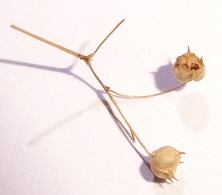
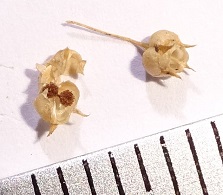
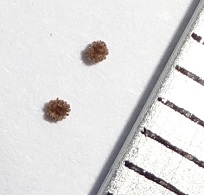
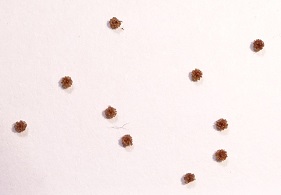
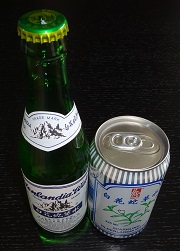 As for the look-alike plant, Oldenlandia diffusa, it goes by the Chinese name 白花蛇舌草, literally translated as
"white flower snake tongue grass". Compared to Oldenlandia corymbosa, Oldenlandia diffusa is far less common. It has
a longer and narrower leaf, and unbranched flower stalk with a single flower. In addition, it has less branches and is more
erected. In term of habitat, it tend to grow in wet soil near ponds or rivers.
As for the look-alike plant, Oldenlandia diffusa, it goes by the Chinese name 白花蛇舌草, literally translated as
"white flower snake tongue grass". Compared to Oldenlandia corymbosa, Oldenlandia diffusa is far less common. It has
a longer and narrower leaf, and unbranched flower stalk with a single flower. In addition, it has less branches and is more
erected. In term of habitat, it tend to grow in wet soil near ponds or rivers.
The extract from this plant is used in a gassy drink called sparking oldenlandia water (白花蛇草水). This drink has been in existence for quite a while, at least since 1962 in accordanace to the label on the bottle. While the drink originated from China, there is a can version produced in Malaysia. It is not know which Oldenlandia species was used in the Malaysia version as the label on the can only indicated Oldenlandia extract.
Whether medicinal plant really works or not is really hard to tell. There are so many different chemicals or compounds in a plant, and in varying quantity in each plant of the same type --- how would one know whether the curative effects (if happen) actually comes from the plant and not cause by other agents or factors (e.g. our body's own immune system). So, do be cautious and try not to consume too much of one plant.
Update: 19 November 2015
Contrary to my original observation, the pictures above were not the seeds of this plant. The seeds were much smaller. The brown rounded structure that I thought were the seeds are likely to be the remnant of the seed holders. I made this renew observation when I dissected a matured plant today. Some tiny seed-like particles dropped from the plant and they were not the same as the "seeds" seen previously. After dissected a near-matured fruit, I was pretty that I got the right seeds now. Picture of seeds are available in the picture deck of this plant.